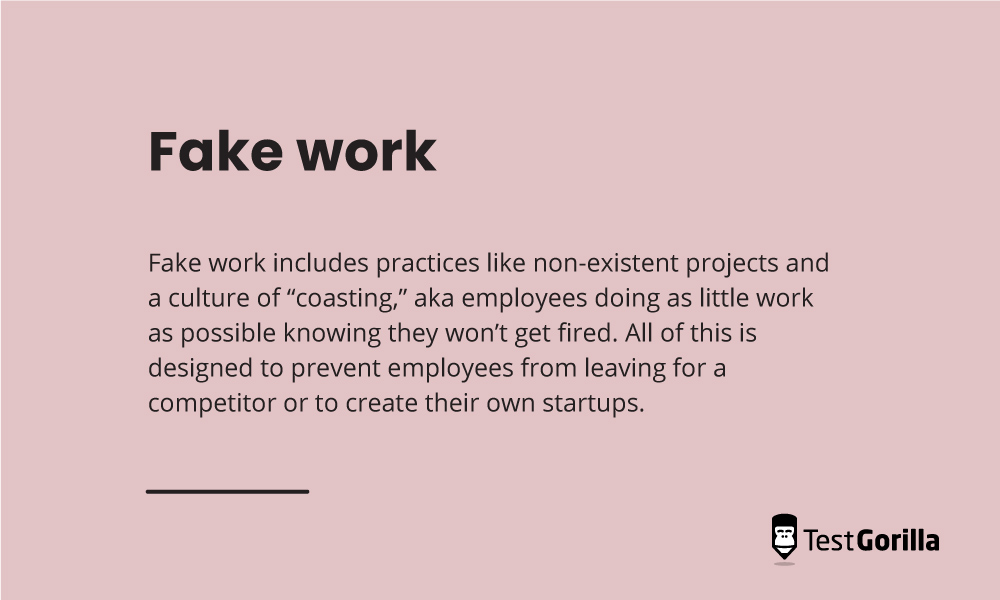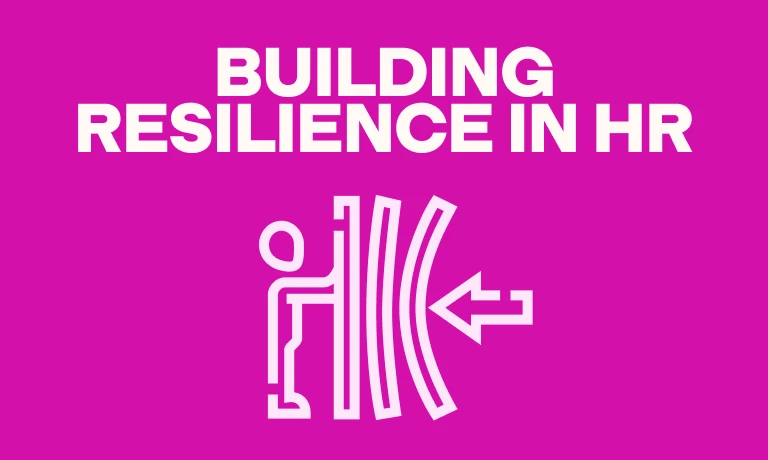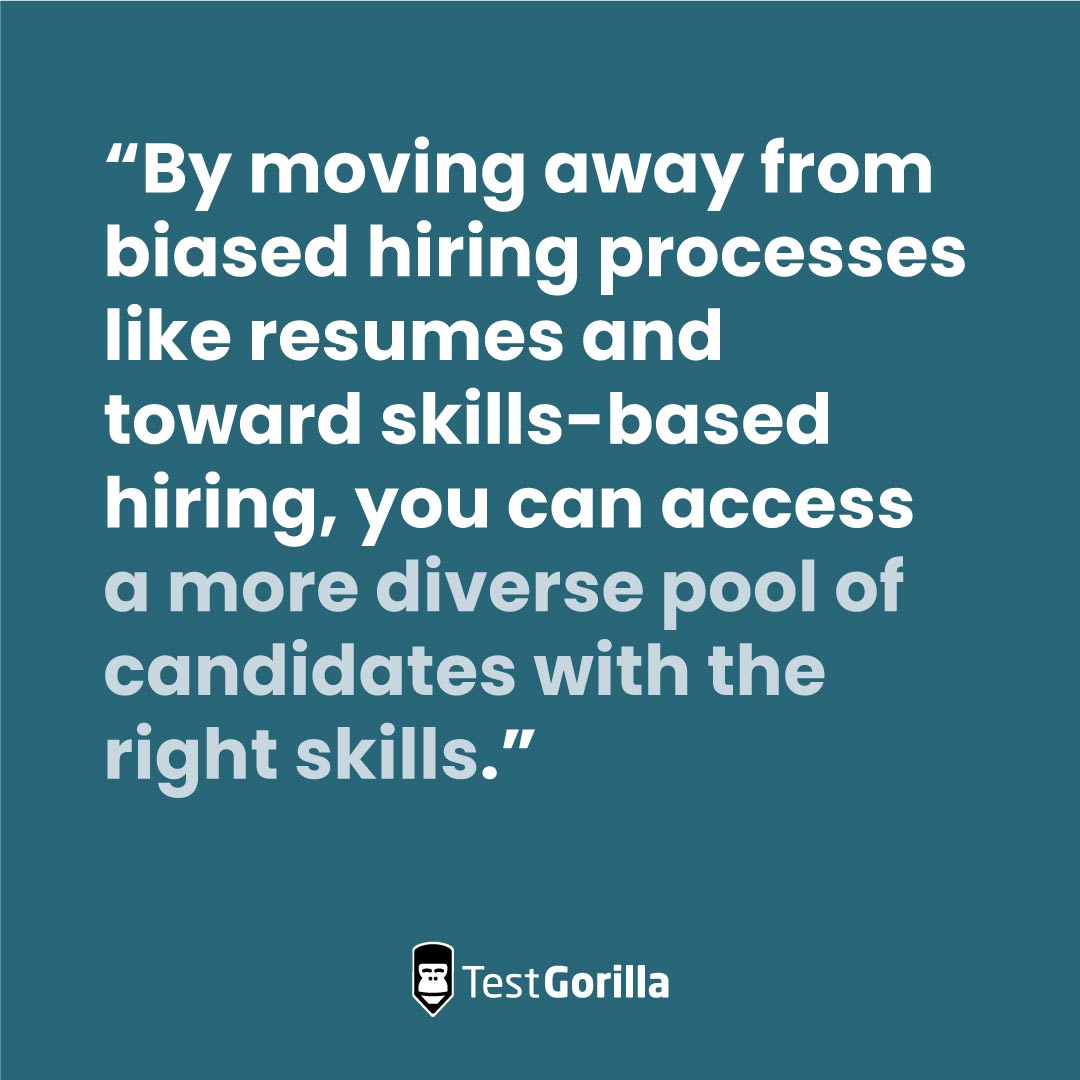So “over it”: The hidden costs of overhiring, and how to avoid them
The Covid-19 pandemic led to a rush to hire in certain sectors, so many companies now find themselves with bloated workforces.1 Salesforce recently joined the ranks of tech industry giants such as Google, Meta, and Amazon in issuing apologies for overhiring and laying off a combined 104,000 employees.2
As the market shifts to favor employers, overhiring has become a pressing issue. Along with draining company capital, it comes with hidden costs for employee morale, candidate experience, and diversity.
While diversity may be a consideration during the hiring process, it’s not necessarily taken into account when deciding who stays and who goes.
In this article, we’ll look at why – even before the pandemic – overhiring is standard practice for some companies. We’ll also dive into the effect of overhiring on companies and employees, the hidden costs for both, and how to avoid these.
After reading this, you’ll be better placed to hire sustainably, improve ROI on hiring, and boost diversity through solid recruiting and retention strategies.
Table of contents
Why do companies overhire?
Companies have plenty of different reasons for overhiring. For some, it’s simply standard practice.
For example, **Apple, Google, Meta, and Microsoft are just a few that have been known to create “fake work”**3 to hoard and overhire employees.
Fake work includes practices like non-existent projects and a culture of “coasting,” aka employees doing as little work as possible knowing they won’t get fired. All of this is designed to prevent employees from leaving for a competitor or creating their own startups.
It’s not just well-established companies that do this, either. Startups with successful early-stage investment rounds may prioritize growth over financial forecasting. Then there’s the pressure to meet short-term objectives — like sales targets or project deadlines — over long-term ones like developing a sustainable business model.
This means new companies are likely to hit a wall where they need to let people go to stay afloat.
Additionally, some companies overhire as a precautionary measure, expecting future expansion or simply wanting to have a larger workforce on hand to address unforeseen challenges. This can backfire if business conditions change or the anticipated growth doesn’t materialize, as seen after the global pandemic.
“There are two main reasons why companies overhire,” says Tim Toterhi, chief human resources officer at Plotline Leadership: “It’s all about accurate resource planning, which is a tricky thing to manage in labor-intensive companies. Firstly, variable customer demand can increase the likelihood of missing the mark on headcount planning. Profit and loss owners want enough capacity to fill the need but don’t want to overhire. The trouble is they have to account for demand spikes and allow time for both hiring and training — the result is often an over-hire situation.”
Tim also emphasizes how a hot job market can make the problem more pronounced if a company is unable to retain good workers, perhaps due to a subpar culture. This means these companies can find themselves hiring replacements for expected turnover at a much faster pace.
What are the hidden costs of overhiring?
While overhiring has obvious costs — like company resources and capital — it can also drain your business of equally important, but typically more “hidden” assets, like company culture and morale, by negatively impacting the employee experience.
This can have even deeper implications for your company, its reputation, and your candidates’ experience.
Let’s investigate those in more depth:
Can undo DE&I initiatives and progress
When the time comes to make personnel cuts after overhiring, the same diversity, equality, and inclusion (DE&I) steps and procedures used in the recruitment process may not apply.
In the tech layoffs mentioned above, black, indigenous, and people of color; women; disabled people; and other marginalized groups were the first to be let go, despite already being underrepresented in the tech industry.4
Without a merit and skills-based approach to deciding who stays and who goes, systemized and unconscious bias — or even using “randomized” lists — could undo DE&I hiring initiatives, resulting in less diverse teams. This can also harm your business as you lose the benefits of diverse perspectives and experiences.
Harms the morale of remaining staff
If overhiring leads to company-wide layoffs or other negative experiences, like losing a workplace best friend, it can erode employee trust in your company and leadership’s decision-making.
As Tim says: “Poor resource planning is littered with costs: staffing and training costs on the way in and employee exit costs on the way out. What is often unseen is the toll these shifts take on those who remain. Employee engagement is often viewed as a “fluffy” metric, but this is a mistake especially when it impacts performance, (quality, speed, etc.) and customer satisfaction.”
Poor candidate and employee experience
Overhiring can give candidates and employees the impression they’re simply a means to an end. Instead of showing people they are valued team members with unique competencies and skills, it can feel transactional and impersonal. This can negatively impact your reputation as an employee-first organization.
Additionally, if your goal is to fill a talent quota instead of creating a tailored candidate experience, it can be increasingly difficult to attract and retain Gen Z (or younger) talent. Especially since **Gen Z most values personalized messaging and timely updates from recruiters for a great candidate experience.**5
Affects the well-being and livelihood of people who’ve been let go
Being laid off can have significant negative effects on the well-being and livelihood of former employees. This can include financial instability and mental health concerns like anxiety and depression.
Loss of income and uncertainty about the future can also lead to feelings of low self-esteem and hopelessness, which can make it difficult to find a new job and regain career momentum.
“Letting someone go is a serious decision and should never be taken lightly. Seasoned HR pros will help managers make fair, fact-based decisions based on an assessment of performance and other objective factors.” Tim Toterhi, chief human resources officer, Plotline Leadership.
Puts strain on internal teams and resources
Rapid overhiring puts pressure on internal teams to recruit, onboard, and assimilate new employees. This can put a strain on limited resources like employee time and, as a result, productivity.
All of this may lead to higher administrative costs as more HR staff may be needed to support and manage a larger workforce. These could include costs related to HR, payroll, supply chain, legal, and other administrative functions.
Having explored the costs of overhiring, let’s now take a look at how you can avoid them.
The best insights on HR and recruitment, delivered to your inbox.
Biweekly updates. No spam. Unsubscribe any time.
How can you avoid overhiring?
Tim says avoiding the hidden costs of overhiring involves being “realistic about your growth plans. Make sure HR and finance are in lockstep with sales and operations. The balance of voices and focus on fact-based decisions will help. That said, it is both art and science.”
Here’s how you can master the art and science of sustainable hiring.
1. Use skills-based hiring
Skills-based hiring is an emerging way of recruiting talent based on assessing a candidate’s applied skills and experience rather than focusing on their qualifications, connections, or background.
By using talent assessment software and testing for skills specific to your open role, you can get in front of the best applicants and compete in the war for talent.
In our 2022 State of Skills-Based Hiring report we found that, of the companies using a skills-based approach to hiring, 91% saw an increase in diversity while 91.2% experienced higher employee retention.
This means that skills-based hiring can help hit your DE&I benchmarks by leveling the playing field for diverse candidates while fostering a more productive work environment. According to McKinsey, **gender- and ethnically-diverse teams are more likely to financially outperform non-diverse competitors by 25% and 36%, respectively.**6
Skills-based hiring also helps you better forecast the skills and competencies you’ll need to fill future roles because it gives you a clear picture of the talent and skills you already have. You can test for an array of soft, hard, and transferable skills. This way, you can make more informed decisions about current and future staffing needs and reduce costly mis-hires.
2. Map your hiring needs
You can typically avoid overhiring by forecasting and planning your hiring needs in advance. This usually involves analyzing historical data, current hiring trends, and future projections. Additionally, determine how many employees are needed to achieve your goals, and whether you can support them all.
To help map your hiring needs:
Use talent assessment software like TestGorilla to create customized skills-based assessments and screen candidates quickly, efficiently, and fairly.
Then, identify any skills gaps in your current workforce or where you need to invest additional resources. Use this information to forecast future skills and talent needs. This may include identifying the number and types of positions that need to be filled, the skills and experience required for each position, and the timeline for filling them.
Lastly, prioritize your hiring needs based on importance and urgency and create job descriptions for each role. If you’re using a skills-based approach to hiring, make sure each job description includes the required skills and competencies.
Want to get more value from your recruitment?
Our complete blueprint will provide the tips, strategies, and insights you need to maximize your recruitment ROI.
3. Hire sustainably
Mapping and predicting your hiring needs can be challenging, especially in the early days of a growing startup. There are a lot of factors to consider, especially when everything, including the company’s existence, relies on keeping a few key investors happy.
Take, for example, the personal assistant startup Zirtual. It grew rapidly after its launch in 2014, attracting investors and expanding its team to over 400 employees. However, its growth was unsustainable, mostly due to a mismanagement of funds and aggressive hiring practices.7 This led to high overhead costs and a lack of cash flow, resulting in the company’s bankruptcy in 2015, which left hundreds of employees (and clients) in the lurch.
To hire sustainably, here are a few things to consider:
Your company’s values and mission. Knowing this will help you identify candidates who share your company’s vision and are committed to its long-term goals and, therefore, more likely to stick around.
Your recruitment practices. Sustainable recruitment practices may include sourcing candidates through employee referrals, social media, and diverse job boards. Additionally, partnering with staffing agencies to find temporary or contract workers to fill short-term staffing needs, without the need for permanent hires.
Your candidates’ long-term potential. Look for candidates who not only have the skills and experience required for the job but also have the potential to grow and develop within the company.
Pro tip: Use TestGorilla’s Culture-add Test to measure crucial competencies like the candidate’s ability to add to your company culture.
4. Build a healthy talent pipeline
You need a healthy talent pipeline if you want to attract and retain the best talent. On top of identifying your hiring needs and developing a sustainable recruitment strategy, you need to:
Build a talent pool. Attend industry events and conferences as well as universities to help build your pool of potential candidates. Additionally, you can use social media and online job boards to reach a wider audience.
Nurture relationships. This can include regular communication, sharing industry news and trends, and providing opportunities for employees to learn and grow.
Streamline your process. Use recruiting automation tools to automate repetitive tasks like candidate scheduling screening and free yourself up for more candidate-facing time, which improves their experience.
Measure success. Keep track of important metrics like time-to-hire, cost-to-hire, number and quality of candidates, and the retention rate of new hires — so you know what to improve.
5. Make retaining talent a priority
In our 2022 report, we found that employees are happier when they’re placed in jobs that match their skills and priorities and, therefore, more likely to stay in their roles longer. It’s also no secret that retaining talent is crucial to the success of any organization.
Here’s how you can put talent retention at the top of your list:
Prioritize company culture and psychological safety. A positive work culture can help create an environment where employees feel valued and motivated to stay. This can include promoting work-life balance and creating a space where people can question, speak up, and give feedback.
Offer training and development opportunities. Companies should invest in professional development programs and training to help their employees upskill and reskill where needed. This can help employees become more versatile and productive while reducing the need for additional staff.
Provide competitive compensation and benefits. This can include anything from offering competitive salaries, health insurance, and retirement plans, to other perks like paid time off and tuition reimbursement. No matter what your compensation is, make sure you’re transparent about pay, which helps establish trust.
“So over” overhiring? Skills-based hiring can help you hire sustainably
Overhiring is a risky gamble that can easily backfire. It can affect everyone from underrepresented groups to recent hires to stakeholders. Unsustainable hiring practices could even impact the health of your organization.
However, by mapping your hiring needs, hiring sustainably, and building a healthy talent pipeline, you can attract and retain the right amount of top-quality talent.
Additionally, by moving away from biased hiring processes like resumes and toward skills-based hiring, you can access a more diverse pool of candidates with the right skills. This way, even if you do need to make staffing cuts, you’ll be better placed to make fair decisions based on skills or merit.
When it comes to recruitment and HR practices, as Tim puts it: “Fairness to all is and should be a given.”
Want to hire the right amount of skilled talent?
Skills-based hiring helps you attract top talent with all the right skills and get more accurate hiring forecasts. Download the State of Skills-Based Hiring 2022 report to learn more
Sources
“How Big Tech’s pandemic bubble burst” (January 2023) CBN Business. Retrieved April 28, 2023 https://edition.cnn.com/2023/01/22/tech/big-tech-pandemic-hiring-layoffs/index.html
“Google, Meta, Amazon and other tech companies have laid off more than 104,000 employees in the last year.” (January 2023) CNBC. Retrieved April 10, 2023. https://www.cnbc.com/2023/01/18/tech-layoffs-microsoft-amazon-meta-others-have-cut-more-than-60000.html
“Venture Capitalist Says Google, Meta And Amazon Employees Are Doing ‘Fake Work’.” (March 2023) Forbes. Retrieved April 10, 2023. https://www.forbes.com/sites/jackkelly/2023/03/09/venture-capitalist-says-google-meta-and-amazon-employees-are-doing-fake-work/?sh=16c865c8a8e7
“Tech layoffs disproportionately affect marginalized communities.” (April 2023) Prism. Retrieved April 10, 2023. https://prismreports.org/2023/04/03/tech-layoffs-marginalized-communities/
“What Gen Z Expects From Candidate Experience in the Era of COVID-19.” (February 2022) RippleMatch. Retrieved April 10th, 2023. https://ripplematch.com/insights/what-gen-z-expects-from-candidate-experience-in-the-era-of-covid19/
“Diversity wins: How inclusion matters”, McKinsey & Company, (2020), Retrieved April 28, 2023 https://www.mckinsey.com/featured-insights/diversity-and-inclusion/diversity-wins-how-inclusion-matters
“Zirtual founder: “The numbers were just completely f***ed.” (August 2015) Fortune. Retrieved April 10, 2023. https://fortune.com/2015/08/13/zirtual-maren-kate-donovan-2/
You've scrolled this far
Why not try TestGorilla for free, and see what happens when you put skills first.


















